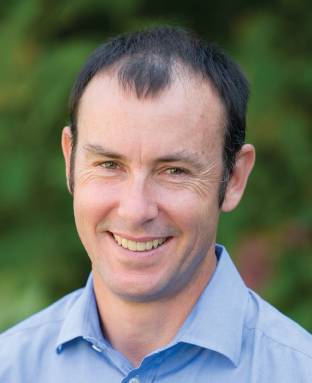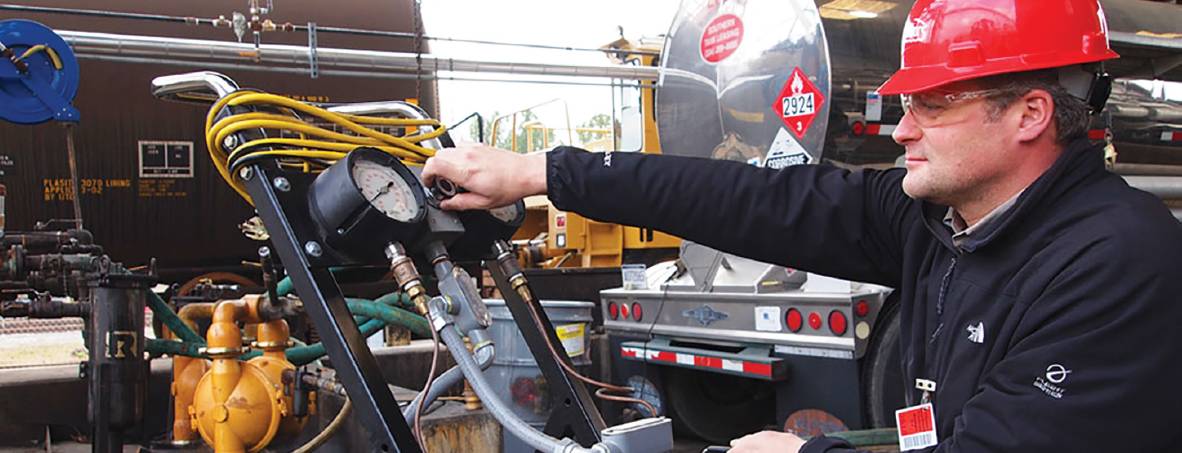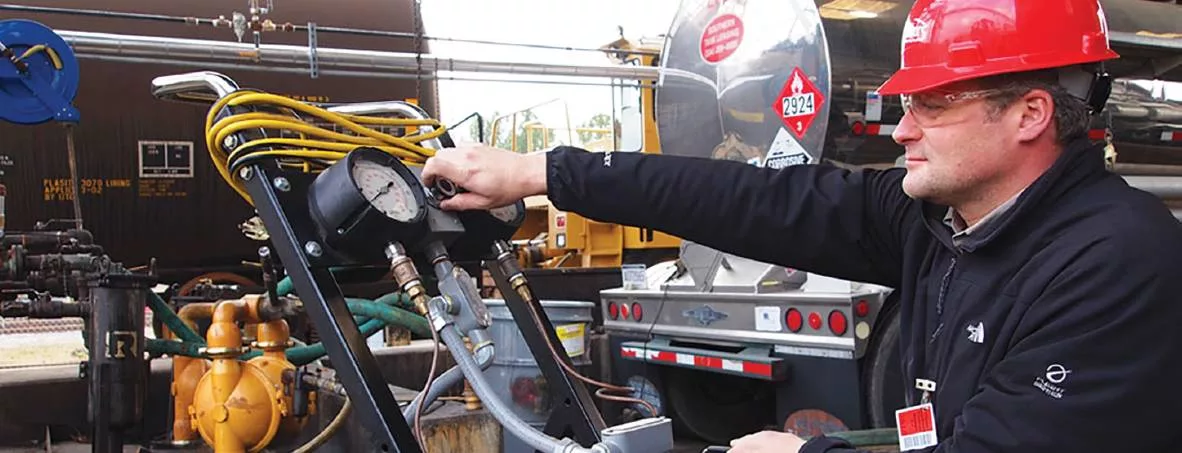
Refrigerants – the chemicals used in cooling technologies such as air conditioners, supermarket cases, and home refrigerators – are extremely potent greenhouse gases. In the US, they have become one of the fastest growing categories of climate pollutants. Under current business-as-usual practices, these refrigerants are simply produced, used, and emitted in a linear cycle that is both expensive for businesses and harmful to the atmosphere. Revolutionary company EOS Climate has developed a system that helps companies see refrigerants as an asset that should be tracked, reused, and resold, rather than as a consumable that is simply wasted at the end of its life. This system helps businesses save money, comply with regulations, and be more efficient with their resources, while simultaneously avoiding emissions of more than 4 million metric tons of CO2 equivalent so far.
Meghan French Dunbar: Why are refrigerants a climate concern and why is EOS Climate’s work important?
Joe Madden: Fluorinated refrigerants, which include chlorofluorocarbons (CFCs), hydrochlorofluorocarbons (HCFCs) and hydrofluorocarbons (HFCs), are incredibly potent greenhouse gases (GHGs) – thousands of times more impactful to our climate system and, under business as usual practices, every pound of refrigerant that is produced eventually reaches the atmosphere. This is due to the fact that, since their invention in the 1930s, refrigerants, like many other materials and products, have been part of a linear model: produce, distribute, use, waste (emit). For CFCs and HCFCs, which deplete the ozone layer, the world came together through the Montreal Protocol and successfully agreed to phase out their production in order to prevent irreversible damage to the Earth’s protective ozone layer. Subsequently, we developed HFCs as replacements, which did not harm the ozone layer. However, like their predecessors, HFCs are powerful GHGs produced in the same linear model on a massive and growing scale.
We are now faced with very serious ecological limits from a climate perspective. The Intergovernmental Panel on Climate Change (IPCC) has provided us with a definitive number: 565 billion metric tonnes of carbon dioxide equivalent (GtCO2e). This is the number of GHGs that can be emitted by 2050 if we are to have a 67% chance of avoiding catastrophic disruption to our climate system. Current projections are that more than 50 GtCO2e will come from HFCs alone by 2050.
At EOS Climate, we assembled a team of experts in finance, policy, operations, sustainability, logistics, and information technology aligned around a simple principle: if individuals and companies have a choice, they will act in an economically rational manner. Based on this concept, we set out to develop an economically rational choice for refrigerants that would deliver positive environmental outcomes on a global scale.
Maren Keeley: How does a company benefit by using EOS Climate’s services – both in California and outside of California?
JM: Regardless of location, EOS Climate helps companies benefit through better utilization of their existing assets, saving them money and time while reducing regulatory and reputational risk.
EOS Climate’s Refrigerant Asset System (RAS) is a cutting edge platform that combines mobile technology and business model innovation to effectively transform refrigerants from consumables to assets.
This sounds like a small change in definition, but moving from “consumable” to “asset” is not just a change in definition, but a significant step toward bringing the circular economy to the refrigerant value chain. No matter where one looks, resource utilization is a major trend that is winning across industries, from transportation (Uber, Lyft, Zipcar) to hospitality (AirBnB) to personal goods (Yerdle) to heavy equipment (Getable).
With EOS Climate, companies with large inventories of refrigerants can now begin to manage those inventories in such a way that allows them to get the most value out of them by recycling their refrigerants in closed loops until they no longer need them. When that time comes, they can sell their refrigerants to other companies that do need them at market rates.
MFD: What insights do you have about carbon markets? What would you do to improve them?
JM: As mentioned, we have entered into uncharted territory with regard to our global climate constraints and we are now faced with very difficult choices. One way or another, we will need to factor in the cost of GHG emissions into the global economy. This will mean a price on carbon, which will most likely come in the form of a tax or a price generated through a regulated market mechanism (i.e. a carbon market). When political issues are considered, including the influence of industry on policy, market mechanisms have an advantage over direct taxation. I have great faith in the efficiency of markets in general, and carbon markets or other environmental commodity markets are no different. Markets deliver swift and efficient outcomes based on all of the factors and information that players consider within a given market structure.

Ironically, the primary reason we are faced with the colossal challenges associated with climate change is that energy markets and the commodity markets that supply those energy markets have, thus far, failed to account for the impact of carbon on our climate system – it simply hasn’t been a consideration. By creating an explicit price on carbon, carbon markets force energy markets to consider carbon. Since carbon markets are regulatory constructs, market design is critical.
Thus far, it seems the policy makers in California have “done their homework” with regard to market design and have avoided some of the issues (price volatility and/or oversupply) that carbon markets in Europe and the Eastern United States have seen. However, most senior folks in policy have years of experience in policy making with little experience in market design, and, likewise, most senior folks in capital and commodity markets have little in the way of policy expertise. Thus, in order for carbon markets to deliver desired outcomes, a delicate balance must be struck and flexibility must be part of the market design. I think it starts with the intention of the players involved, but there needs to be a system of checks and balances built in.
MFD: What advice do you have regarding hiring and building a quality team?
JM: Seek the best. Find people that are more talented than you, understand their needs, and empower them. Remember at all times that your team is bigger than any individual on it (including you) and work to preserve the team above all.
MFD: What’s next for EOS?
JM: Thomas Friedman had a column in the New York Times recently entitled “The World is Fast,” where he noted that the three biggest forces on the planet – the market, Mother Nature, and Moore’s Law – are all in a period of radical acceleration and change. EOS sits at the nexus of these converging factors. Our challenge will be to effectively leverage technology to enable the quantification and verification of environmental metrics so that the actions and materials that will result in positive environmental outcomes can be effectively valued in both the refrigerant marketplace and in the capital markets more broadly. If we’re successful, it could change the way commodities are valued and traded on the planet for the better.
MK: EOS is relatively young. What insights do you have for other young companies that are trying to get off the ground?
JM: I think it is important to understand:
1. Market: Is there a market for whatever product or service you sell?
2. Competition: If there is a market, why is your product or service a winner?
3. Why: Getting a business off the ground is not for the light of heart. What is the reason you are going to get out of bed in the morning and do what you do in the face of uncertain odds?
4. Team: Make sure your team is talented, committed, and trustworthy.
5. Action: Act. Don’t be afraid to fail. If you are clear on your reason for doing something, do it. My biggest failures are usually instances where I failed to act.
6. Intuition: Listen to your intuition – it is powerful.
7. Naivety: Embrace it.
8. Learn (fast).
9. Laugh.






